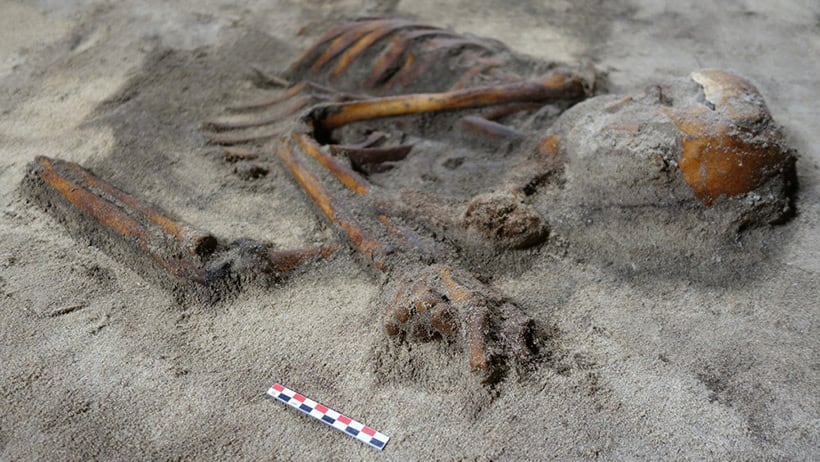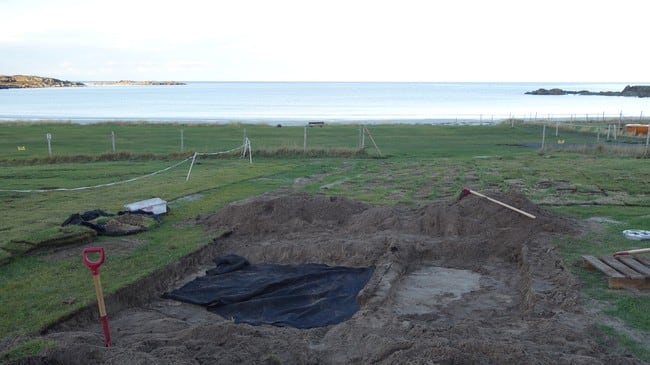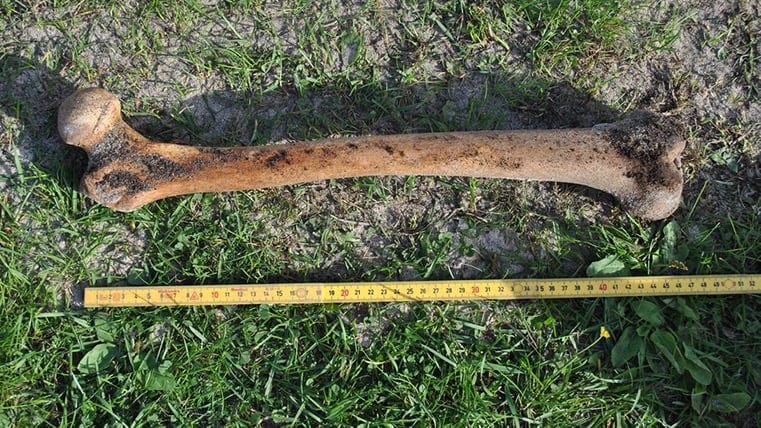Díky 
An Iron Age grave in Norway
Categories: Finds and rescue research abroad , Nálezy nejenom s detektorem ve Skandinávii
Archaeologists have discovered a remarkably well-preserved skeleton on the archipelago of Lofoten, which they believe to be from the Iron Age. It appears to have an axe stuck in its jaw.
Earlier this year, archaeologists were surprised by the discovery of a hip and femur during a routine excavation. So they continued working until they managed to excavate the entire upper part of the skeleton, which is completely intact.
The archaeological team in Lofoten is led by Anja Roth Niemi from Arctic University. "Parts of the grave are incredibly well-preserved, which is really quite surprising given the work that was carried out in the area in the 1950s and 1960s," said the archaeologist. "The upper part of the skeleton was not damaged even during land levelling or other human activity. It's absolutely amazing," Roth added.
The grave is located specifically on the island of Gimsøya, which is part of the Lofoten archipelago. It lies between the islands ofAustvågøya and Vestvågøya. Gimsøya is mountainous in the south and east. Historically, a substantial part of the island was a village, but it disappeared in 1964. According to the latest data from 2016, 181 people resided there.
In the past, archaeologists have discovered several originally inhabited sites on Gimsøya, which they believe date back to the Iron Age. They probably came across the remains of a farm. That is why the archaeologists originally started to investigate the area.
According to the archaeologists, the grave they found is probably from the pre-Christian era, probably around 700 BC. During this period, it was common for people to be buried on the farms where they lived. These finds are usually heavily affected by age, or simply destroyed or disturbed by human activity. The grave found almost met the same fate. Just 20 centimetres from the skull are traces of ploughing.
Based on the findings so far, archaeologists have formed a working hypothesis about the identity of the man to whom the skeleton belonged. The skeleton was crouched in a fetal-like position, with one arm extended towards the head and the other clenched into a fist. It seems likely that he was one of the common people, for there were no weapons or decorations in the grave, only an ordinary axe. So he did not have a high status in society," Roth said.
"Right now we are trying to find out whether the axe is stuck in the lower jaw or lying next to it," the archaeologist noted.



Sources: www.lifeinnorway.net, www.nrk.no
The article is included in categories:




